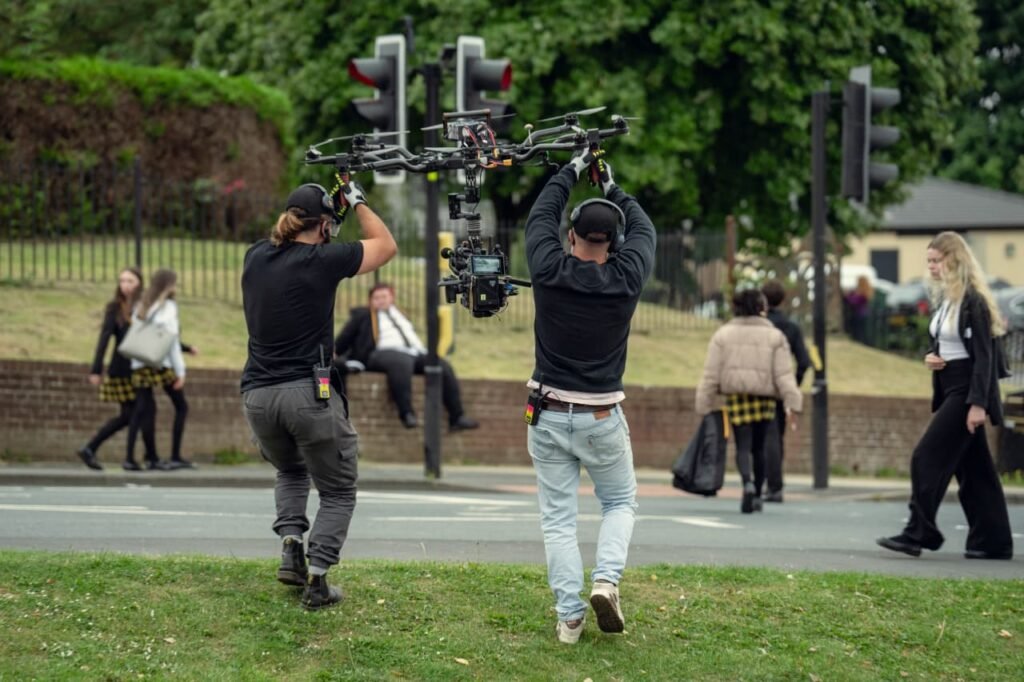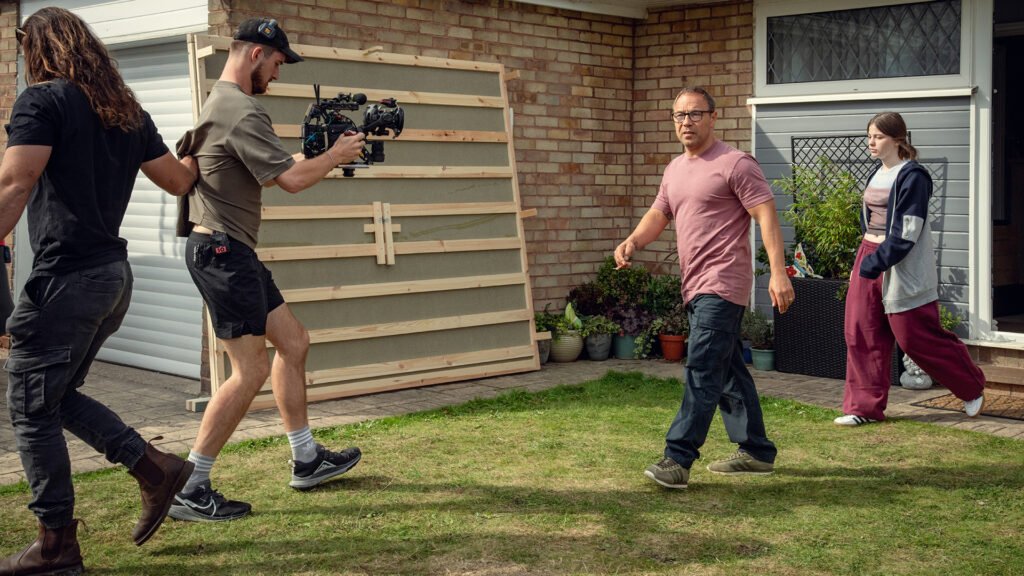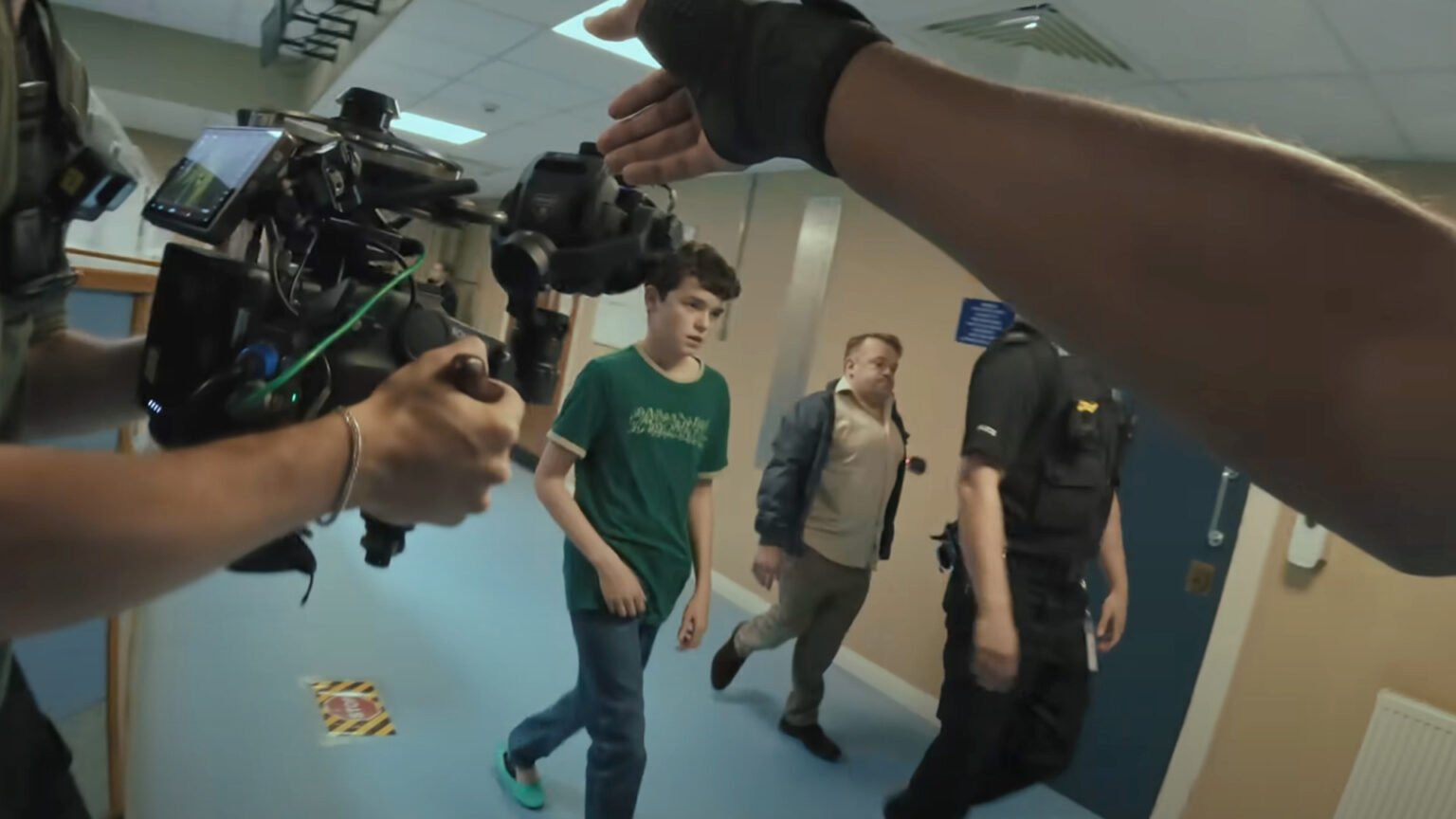Camera Tech in TV Shows: A Game-Changing Opening with Seamless One-Takes

Camera tech in TV shows has reached new heights, enabling breathtaking sequences that drop viewers directly into the action. Three loud bangs from a police battering ram break the silence. The front door crashes open. Chaos erupts.
Armed officers rush in. As the handheld camera swiftly pivots — a hallmark of the cutting-edge camera tech in TV shows like Adolescence — we see a woman hit the ground, then glide past a man on the stairs, his hands raised in vain protest. In mere moments, a 13-year-old boy is handcuffed and escorted outside into the morning light, while his family screams in disbelief. We return to a dimly lit police van where the boy now sits in stunned silence.
One-Take Wonders: How Camera Tech in TV Shows is Raising the Bar
Each of the four hour-long episodes of Adolescence was filmed using a continuous “oner” — a one-take shot that moves fluidly through various scenes and perspectives. The camera tracks characters through unpredictable, high-energy situations, switching seamlessly from handheld mode to being mounted on vehicles and drones.
The show’s visual fluidity is largely thanks to new-generation lightweight, self-stabilizing cameras that adapt in real-time to shifting light and movement. One key device: the DJI Ronin 4D — a compact, high-resolution camera with motion sensors that detect ground surfaces and nearby objects. These built-in sensors enable internal mechanisms to stabilize shots, even during high-speed chases or sudden directional shifts.
Camera Tech in TV Shows: A Revolution in Cinematic Storytelling

One unforgettable scene in Episode 2 begins with an interior car shot. The camera then exits the vehicle, crosses a busy street, ascends above rooftops using a drone, and returns to ground level in a single flow. Apart from a tiny wobble during the drone-to-handheld transition, the sequence feels entirely seamless to the viewer.
This degree of visual storytelling marks a turning point for TV cinematography.
From Clunky to Cutting-Edge: Camera Tech in TV Shows Through a Filmmaker’s Eyes
Boston University film professor Tim Palmer admits he was initially skeptical of the show’s single-take claim. “But when I saw it, I knew it was authentic,” he says. “There are no cheats. It’s just brilliant camerawork.”
Palmer, who previously worked on the BBC hospital drama Critical in 2014, recalls using joystick-controlled pan-and-tilt cameras that lacked finesse. “The tech just wasn’t precise enough back then,” he says.
He also points out that while gimbals have existed for years, only recently have the mechanisms for remote control and stabilization reached cinematic standards. Today’s systems allow filmmakers to activate or deactivate filters and stabilizers remotely — a breakthrough for dynamic storytelling.
A Legacy of Long Takes — And a Leap Forward
Long, unbroken shots have existed in cinema for decades. The 2015 German thriller Victoria is one standout — a two-hour, 20-minute feature filmed entirely in a single take. Cinematographer Sturla Brandth Grøvlen insists, “There are no edits or cuts.” He used a Canon C300, a modest motion picture camera tailored to documentary-style realism.
To execute Victoria’s intense, real-time feel, Brandth Grøvlen stripped the camera down to essential components and rehearsed each scene meticulously. “When the actors suddenly start running, I switch grips mid-shot,” he explains. “That small change reduces shake and keeps it grounded.”
DJI Ronin 4D: Redefining Camera Capabilities
According to Brett Halladay, DJI’s product education manager, the Ronin 4D is the company’s first dedicated cinema camera. It streams high-resolution footage wirelessly to on-set monitors and intelligently selects the best available signal frequency.
However, Halladay admits the device isn’t optimized for vertical filming — a growing necessity in the era of TikTok and Instagram Reels. Still, cropping from landscape is possible if needed.
Competition Heats Up: Canon’s Lightweight Cinema EOS Series

Canon, another major player in the camera market, promotes its Cinema EOS line as a solution for both filmmakers and content creators. Barry Griffin, a Canon manager, notes that these compact yet powerful cameras are popular in podcasting and live-stream environments — offering TV-level quality in small spaces.
Storytelling First: Why Camera Tech Must Serve the Narrative
Filmmaker and University of Georgia professor Booker T. Mattison emphasizes that camera perspective is a crucial storytelling tool. “The camera’s point of view shapes the audience’s emotional response,” he says. “These new tools allow for more immersive, dynamic narratives.”
Still, experts warn against prioritizing technical stunts over substance. Carey Duffy of Cooke Optics, whose lightweight lenses were used in Adolescence, acknowledges that while “oners” are visually impressive, they should serve the story, not overshadow it.
“A seamless take is exciting, yes,” adds Prof. Palmer. “But ultimately, audiences stay for the story — not just the camera wor
The Future of Cinematic TV Is Here
From real-time stabilization to wireless streaming and drone integration, camera tech in TV shows like Adolescence is dramatically changing the way stories are filmed. The evolution of camera tech in TV shows allows creators to craft immersive, dynamic narratives that were once impossible to capture. As camera tech in TV shows continues to advance, directors and cinematographers are gaining new levels of creative control, enhancing both the production quality and emotional impact of each scene.
As long as the tech serves the narrative — not replaces it — the possibilities for powerful, immersive storytelling are endless.




